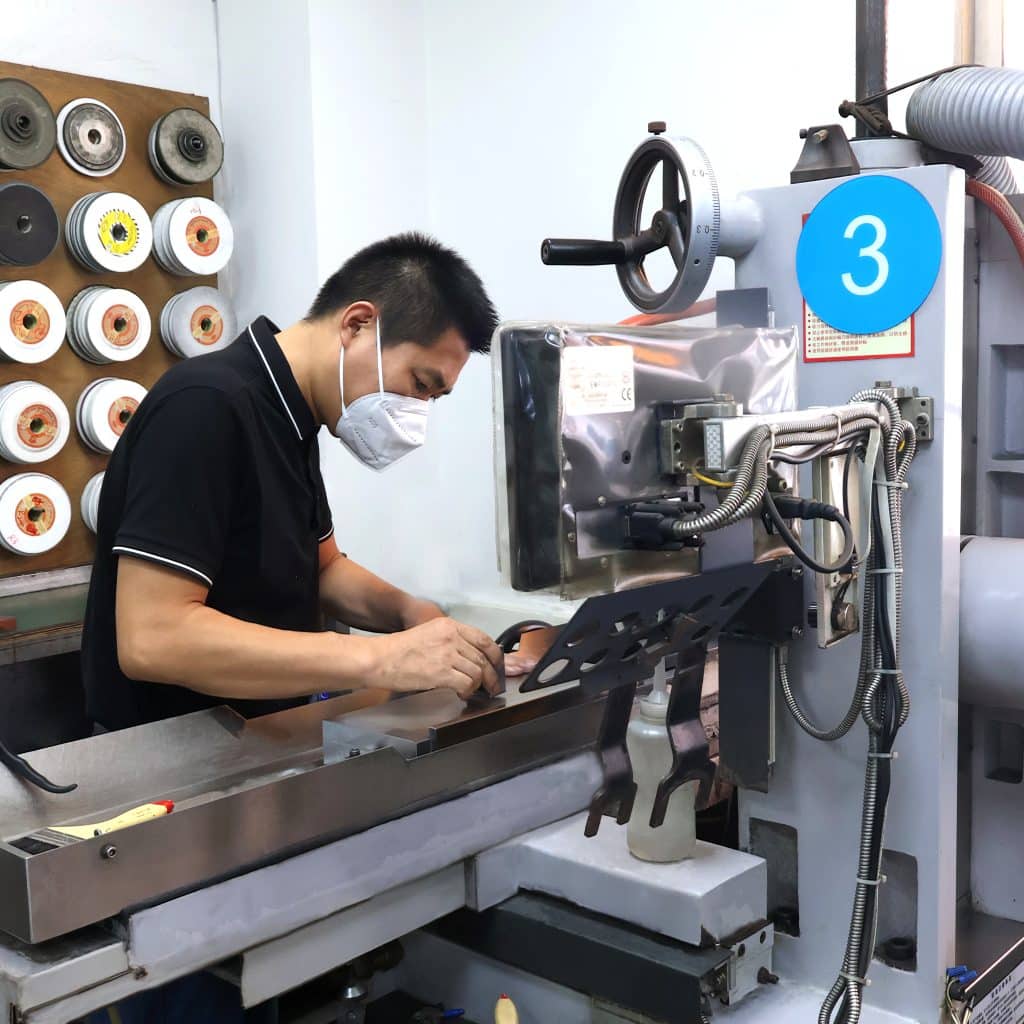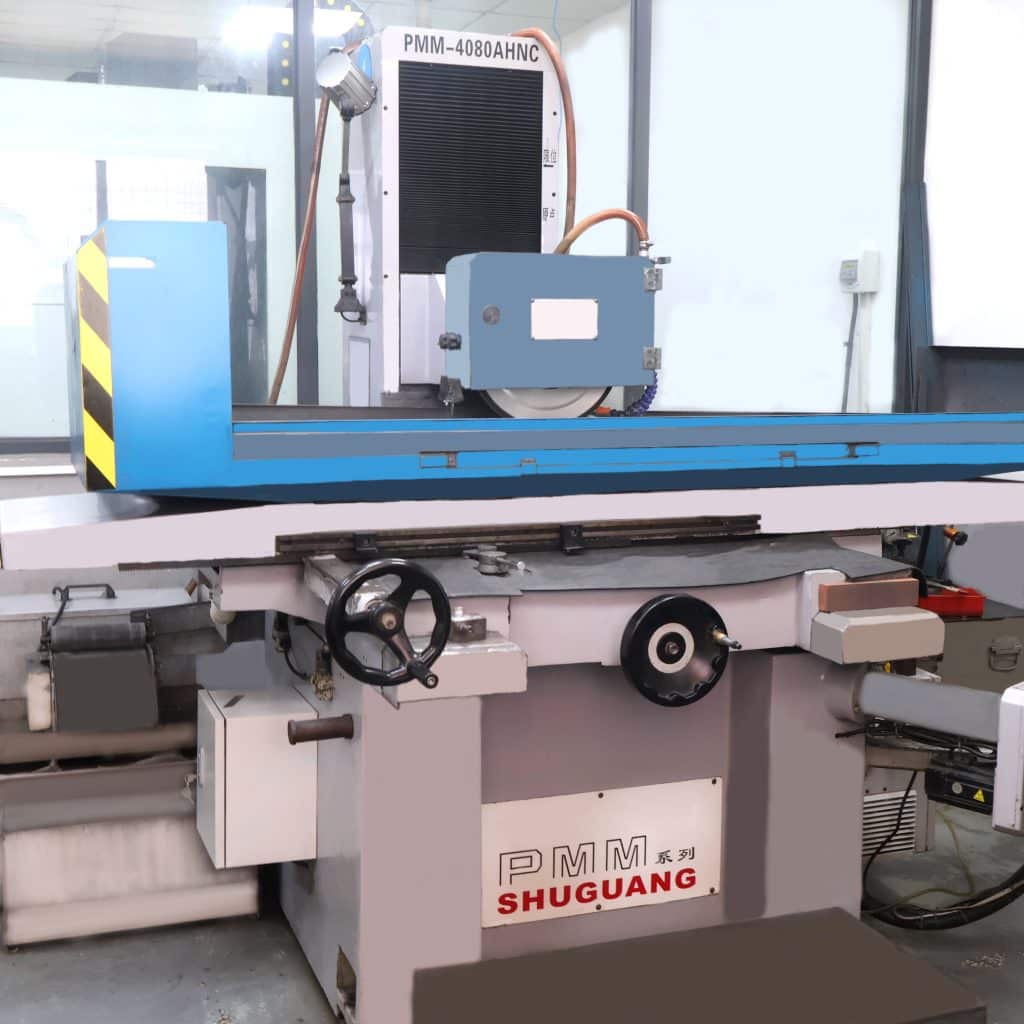Ultra-precision Machining: Grinding Process
Introduction to the Grinding Process
Grinding is one of the most widely used cutting processes. It employs a high-speed rotating abrasive wheel to remove material from the surface of a workpiece. Grinding is extensively applied in the mechanical manufacturing industry.
Principles of the Grinding Process
The grinding wheel is composed of numerous abrasive grains with irregular shapes and sharp edges. Each abrasive grain acts as a tiny cutting tool, producing a cutting effect when it penetrates the surface of the workpiece. The grinding process can be divided into three stages: Rubbing Stage: The abrasive grains contact the workpiece surface but do not penetrate, generating only friction. Plowing Stage: The abrasive grains cut into the workpiece surface, forming grooves and causing plastic deformation of the material. Cutting Stage: The abrasive grains penetrate deeper into the workpiece, removing tiny metal chips and achieving actual material removal.
Characteristics of the Grinding Process
High Efficiency: Grinding operates at very high cutting speeds and can simultaneously process multiple surfaces, greatly improving machining efficiency.
High Precision: Grinding can produce workpieces with a surface roughness as low as Ra 0.003 μm and allows precise control of the workpiece’s shape, dimensions, and position. Therefore, it is widely used in the field of precision machining.
Wide applicability: Grinding can process materials of various hardness, such as quenched steel, hard alloys, and tungsten. Meanwhile, grinding is also capable of machining components with complex shapes, such as blades, turbine discs, and medical instruments.
Stable machining quality:During grinding, material removal is achieved through the friction between the grinding wheel and the workpiece. As a result, the process generates neither large cutting forces nor significant vibration or noise. The machining quality is stable, and the process offers good controllability.
High requirements for operator skills:Grinding requires operators to possess certain skills and experience. Since the cutting speed in grinding is extremely high, operators need to have quick and precise hand–eye coordination. Experienced technicians can select suitable grinding wheels and adjust cutting parameters based on the workpiece material and machining requirements.

Applications of Grinding
In the final stage of the process flow — the finishing stage — grinding is required for assembly and mating surfaces. The main reasons are as follows:
To ensure high dimensional accuracy
Assembly and mating surfaces often determine the relative positional relationship between parts, such as shafts and holes or guide rails and sliders. Conventional turning or milling can hardly guarantee a tolerance of ±1–2 μm, while grinding can consistently achieve this level of precision.
To improve surface quality and reduce friction and wear
After grinding, the surface roughness can reach Ra 0.2 μm or even lower, approaching a mirror finish. The surface smoothness is high, resulting in low friction and minimal wear, which extends the service life of the components. It is especially suitable for sliding fits and other parts that require low friction.
Ensure assembly stability and interchangeability
If the workpiece accuracy is insufficient, assembly may encounter problems such as improper fit, excessive gaps, or premature failure. Therefore, precision mating components must have strictly controlled dimensions and surface profiles to achieve the correct interference or clearance during assembly.
Reduce residual stress and deformation
Preceding cutting operations can leave tool marks and stress concentrations, while grinding can remove the work-hardened layer and reduce residual stress. This improves the fatigue resistance and stability of mating surfaces.
Meet the requirements of high-end applications
In fields such as molds, bearings, hydraulic components, and machine tool spindles, mating and assembly surfaces not only require dimensional accuracy but also demand surface finish and long-term stability. Grinding is virtually the only feasible process to achieve this.
Turning and milling can shape the workpiece, but grinding is necessary to ensure accuracy and performance. In general, turning/milling surfaces exhibit obvious tool marks and periodic patterns. The tool mark shapes are typically helical for turning, or arc/linear cross patterns for milling. For example, turning often produces concentric circular marks, while milling commonly results in arc-shaped fan patterns or scale-like marks. These grooves are relatively deep, with pronounced peaks and valleys, and the surface roughness is generally in the range of Ra 1.6–3.2 μm. The uniformity of the surface pattern is affected by the tool nose radius, tool vibration, and variations in feed rate.

This type of surface pattern can have a significant impact on the performance of the workpiece.
Due to the presence of surface grooves, the actual contact area is smaller than the theoretical design value. During assembly, this can easily lead to localized point contact instead of full-surface contact, resulting in insufficient positioning accuracy and difficulty in meeting the required assembly precision. Localized contact also causes stress concentration at the peaks of the grooves, which, over prolonged use, may lead to plastic deformation or micro-spalling in these areas, gradually increasing the clearance in the fit. For components subjected to cyclic loads, such defects are more likely to initiate fatigue cracks, significantly reducing service life.
Grooves with strong directionality act like “chip-collecting channels,” easily trapping debris generated during grinding, such as swarf, sludge, and dust. These contaminants repeatedly become entrapped between friction pairs, effectively forming a “third-body abrasive,” which significantly accelerates wear. The accumulation of debris in the grooves can also cause sticking of the friction pairs, increasing operational resistance and leading to abnormal wear of components, thereby causing premature failure and shortening service life. At the same time, residual particles can scratch the workpiece surface, reducing surface quality. Under high-precision or high-load conditions, these issues are even more likely to trigger equipment vibration, overheating, and potentially unplanned downtime.
Deep grooves are a typical source of stress concentration, and their sharply transitioning bottoms are highly prone to becoming crack initiation points. Once a crack forms, its propagation rate increases significantly, leading to a reduction in the component’s fatigue life. The actual load-bearing capacity may fall below the design value, posing a risk of premature failure. Under long-term cyclic or impact loading, the component may even experience early fracture, potentially causing equipment downtime or damage.
From the perspective of precision components or high-end clients, obvious tool marks are often seen as a sign of insufficient machining quality, which can easily reduce the perceived grade and acceptance of the product.Fenghe Precision is equipped with advanced machinery such as China Shuguang SGM-450 and PMM 4080AHNC, specializing in precision grinding for industries including semiconductor, medical, automotive, mold, and automation equipment. We work with a wide range of materials, including magnetic materials (such as carbon steel and tool steel) and non-magnetic materials (such as copper, aluminum, stainless steel, and PEEK plastics).With decades of rich experience and a client base of over a thousand companies, customer satisfaction remains our top priority. Leveraging outstanding processing capabilities and comprehensive equipment support, Fenghe provides reliable backing for clients’ export orders.